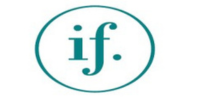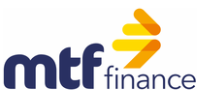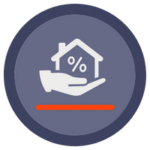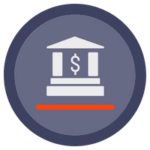Compare personal loans
We help you compare and assess loans to get the best deal for you

The breakdown
- Comparing rates, fees, and available terms from multiple lenders will help you make the right choice.
- Loan interest rates in New Zealand currently range from around 10% to as high as 30%, but don’t forget about fees.
- There are alternatives to a personal loan that are worth considering, depending on how much you want to borrow and over what timeframe.
Author: Kevin McHugh, Head of Publishing at Banked.
Compare the best personal loans
Compare interest rates, loan terms, and fees with our handy comparison table.
Rates and fees updated: 27 October 2025.
| Lender | Interest rate (p.a.) | Loan types | Terms | Establishment fee | |
|---|---|---|---|---|---|
 Instant Finance
Instant Finance
|
9.95% - 29.95% | Secured and unsecured | 3 months to 7 years | From $100 to $220 | |
 ANZ
ANZ
|
13.90% | Unsecured | 6 months to 7 years | $0 | |
 MTF Finance
MTF Finance
|
9.90% to 23.25% | Secured and unsecured | 3 months to 5 years | Up to $376 | |
 The Co-operative Bank
The Co-operative Bank
|
9.95% to 17.75% | Unsecured | 6 months to 5 years | $155 | |
 ASB
ASB
|
13.90% | Unsecured | 6 months to 7 years | $99 | |
 Westpac
Westpac
|
13.90% | Unsecured | 6 months to 5 years | $0 | |
 BNZ
BNZ
|
12.65% | Unsecured | 3 months to 5 years | $50 |
What is a personal loan?
A personal loan is an amount of money you can borrow and repay over a period of time. In NZ, this period can range from 6 months to 7 years, depending on the size of the loan and your agreement with the lender.
The interest rate you’re offered will depend on things like your credit score, how much you earn, and if you have an asset (like a house or a car) that you can use as collateral to secure the loan.
A personal loan can help you pay for something you would not be able to afford otherwise. They’re also commonly used as a way to consolidate debt into one more manageable payment.
You can learn more about debt consolidation loans and compare options in our guide.
It’s important you understand what a personal loan involves and how to find the right loan for your needs.
Secured vs. unsecured loans
There are two main types of personal loan: secured and unsecured. Both are widely available in New Zealand, and both have pros and cons.
Secured personal loans
A secured personal loan is one that is secured by an asset, usually a vehicle or property. This asset may be described as ‘collateral’. For example, car loans are usually secured against the car you are using the loan to buy. Learn more about car finance or compare car loans.
Because the lender has the added security of an asset, there is less risk for them. This means that secured loans have lower interest rates than unsecured loans.
Pros
- The lower interest rate of a secured loan means you will pay less to borrow overall.
- You will likely be able to borrow more.
Cons
- You need to have an asset the lender will accept as security.
- You cannot pay back the loan, the lender could seize the asset used to secure the loan.
Unsecured loans
An unsecured loan is one that you do not need to secure with an asset, such as a car or a house. Because the lender does not have collateral for security, they carry more risk so the interest rate you get will be higher.
Pros
- You don’t need any collateral to take out an unsecured loan.
- Because no collateral is involved, the application process will be simpler and involve less paperwork.
Cons
- You will pay more interest than you would for a secured loan.
- You won’t be able to borrow as much.
- It might be harder to get an unsecured loan if you have a lower credit score or a lower income.
Check out our guide to unsecured personal loans in NZ for more.
Which one is right for you?
Whether a secured or unsecured loan is best for you will depend on your personal circumstances and what you want the loan for.
You will get a better interest rate with a secured personal loan, and you will likely be able to borrow more. But if you don’t have collateral or are looking for a smaller loan that involves less hassle, you may find an unsecured loan is best for you.
How to find the best personal loan (and what to watch out for)
When looking for a personal loan, there are a number of things to look out for.
The advertised interest rate is probably not the rate you’ll get
Lenders and brokers offer different people different personal loan interest rates depending on their circumstances. Someone with an excellent credit rating, a steady income, and an asset they can use as collateral will get a loan at a better interest rate than someone who doesn’t have those things.
That’s why it’s important to be wary of advertised interest rates. A lender may advertise rates “from 6.99% p.a.”, but you will only get that rate if you meet particular criteria. You personally might get a much higher interest rate from the same lender.
You might find that a lender who advertises a higher starting interest rate can actually offer you a lower rate.
Watch out for fees
When looking for a personal loan, you might focus on the interest rate, but it’s important to know what fees might be involved.
There are lots of types of fees, including missed payment fees, early repayment fees, loan restructuring fees, and so on. It’s important you’re aware of all the possible fees a lender might charge, but also don’t get overwhelmed at this stage – just make sure you review what these are before you sign up.
Most fee types only apply in particular circumstances (you missed a payment, for example), but there are some fees that some lenders will charge all borrowers:
- Establishment fee: Some lenders will charge a fee to set up the loan. This can vary depending on the amount and the lender, but it can be as much as $400 or even higher.
- Service fee: This can go by different names such as an ‘account fee’ or a ‘maintenance fee’. This fee is charged on a regular basis and is often around $10 per month
- Broker’s fee: If you use a broker to take out a personal loan, it’s very likely that they will charge a broker’s fee. This is an amount the broker charges for helping you find a loan and it can be up to $1,000.
Be sure you can make the repayments
A personal loan can be a substantial financial commitment that can last for years. It’s important you fully understand what your repayments will be over the period of the loan.
The amount you have to repay each month may seem manageable right now, but things can change over your loan repayment term. Do you plan to have any other substantial outgoings during this period? Will your income change, or become harder to predict?
Some personal loans have repayment terms as long as 7 years, and it can be difficult for us to plan that far ahead in the future.
Our loan repayment calculator can help you understand what your repayments would be and plan your finances.
Why are personal loan interest rates going up?
If you’ve been looking for a personal loan for a while, you might have noticed advertised rates creeping up. One of the main reasons for this is the corresponding increase in the NZ Official Cash Rate (OCR).
Personal loan interest rates in New Zealand are heavily influenced by the OCR, which is set by the Reserve Bank of New Zealand (RBNZ). The OCR is the main tool the RBNZ uses to control inflation and maintain economic stability.
When the OCR goes up, it becomes more expensive for banks to borrow money and those higher costs usually get passed on to customers in the form of higher interest rates (including for personal loans).
But while rates might seem a bit high now, they recently peaked a couple of years ago. In 2023, the OCR reached 5.5%, the highest level in over a decade. That’s when personal loan rates were even higher.
Inflation has eased and the RBNZ lowered the OCR again. But personal loan rates haven’t fallen as quickly. There are a few reasons for this:
- Banks are cautious: Banks and other lenders can be slow to reduce lending rates, especially if they are worried about future economic uncertainty or if they expect more fluctuations ahead.
- Higher risk: During tough economic times, banks often charge higher interest rates to cover the greater rist of some people not being able to pay back those loans.
- Costs for lenders: Funding costs and regulatory requirements can also affect how much banks and lenders charge borrowers.
So while the OCR is coming down, personal loan rates might stay higher for a while. That’s why it’s important to shop around and compare lenders carefully. Some lenders may pass on OCR cuts faster than others, and you might be able to find a better deal by looking at different offers.
Learn more about the OCR on the RBNZ website.
Alternatives to a personal loan
Whether a personal loan is right for you or not will depend on your personal circumstances, what you plan to do with the money, and the loan deal you get. We take a look at some alternatives and when they may be a better financial choice.
Credit card
A credit card is a flexible way to borrow and repay money. A credit card comes with a credit limit that you are free to use as you like (with some exceptions), as long as you make the repayments.
Some credit cards also come with a variety of benefits, such as cashback on purchases or the ability to earn Airpoints on your spend.
But at around 18%, the average credit card interest rate is usually higher than personal loan interest rates. Also, it is usually possible to borrow more on a personal loan than would be approved for a credit limit.
For these reasons, a credit card is usually better suited for day-to-day use than a single large purchase.
Find and compare credit cards here.
Borrow against the value of your home
If you own a property, you may be able to borrow against its value. Ways to do this include:
- A home loan top-up: If you already have a mortgage, you may be able borrow more or ‘top-up’ your mortgage. Whether you will be able to do this will depend on your lender, but they will look at things like how much you have paid so far, the amount of equity you have in your home, and what the loan is for.
- A reverse mortgage: A reverse mortgage lets you free up some of the value of your home. It is only an option for those who are 60 years old or over and owe no or very little money on their home.
Borrowing against the value of your home will likely get you a better rate than a personal loan and they are a popular choice for those looking to renovate their home – see our guide to home renovation loans.
Bank overdraft
You may be able to apply for an overdraft on your transaction bank account. Like any form of credit, your bank will assess your circumstances before choosing to offer you an overdraft facility.
The interest on the money you owe on your overdraft will likely be higher than a secured personal loan and the available amount will likely be less. Like a credit card, a bank overdraft is a better option for smaller, short-term financial needs.
Buy now, pay later
Buy now, pay later (BNPL) services are a relatively new form of credit. Providers such as Laybuy, Afterpay and Zip allow users to buy items at participating shops and spread the payments over an agreed period (usually 4 weeks to 6 months).
BNPL services may be an option to consider if you want to make a relatively small purchase and are able to pay it off in a matter of weeks or months.
Can I get a personal loan with bad credit?
Yes, you can still get a personal loan if your credit score is not great, but it will be more of a challenge and you will likely face a higher interest rate.
Any reputable lender will assess your credit score and history when deciding whether to approve a loan. If you’ve missed loan or credit card payments in the past, for example, or you have other black marks on your credit report, many lenders will be less inclined to approve you. But that doesn’t mean there won’t be some lenders that will.
How bad credit affects your loan options
If you have bad credit, you might:
- Pay a higher interest rate: Lenders often charge higher rates to offset the extra risk they see as being involved.
- Be approved for a lower loan amount: You might not be able to borrow as much as someone with good credit. Other terms will also likely be involved.
- Be asked for security: Some lenders may require you to secure the loan against an asset, such as a car, to reduce their risk. The benefit of this is that secured loans often have lower interest rates.
Face stricter repayment terms: You’ll probably have fewer options when it comes to loan terms and repayment flexibility.
Tips for getting approved with bad credit
There are a number of ways you can improve your chances of being approved for a personal loan if you have bad credit.
For a start, you can apply with a lender that specialises in bad credit personal loans. They will be more experienced in working with borrowers who have had financial difficulties.
Also, look at applying for a secured personal loan — one that uses something of value (often a car) as collateral. This reduces risk to the lender and will result in you getting a lower interest rate than with an unsecured loan.
Borrowing a smaller amount can also increase your likelihood of approval. Again, a lower amount means less risk for the lender.
And while it’s probably largely out of your control at this moment in time, having a stable income and being able to prove steady employment will be a big help for your application as it will give lenders confidence you can meet your obligations.
Finally, avoid making multiple loan applications at once. Each credit check can lower your credit score and make it harder to get approved.
See other loan guides:





